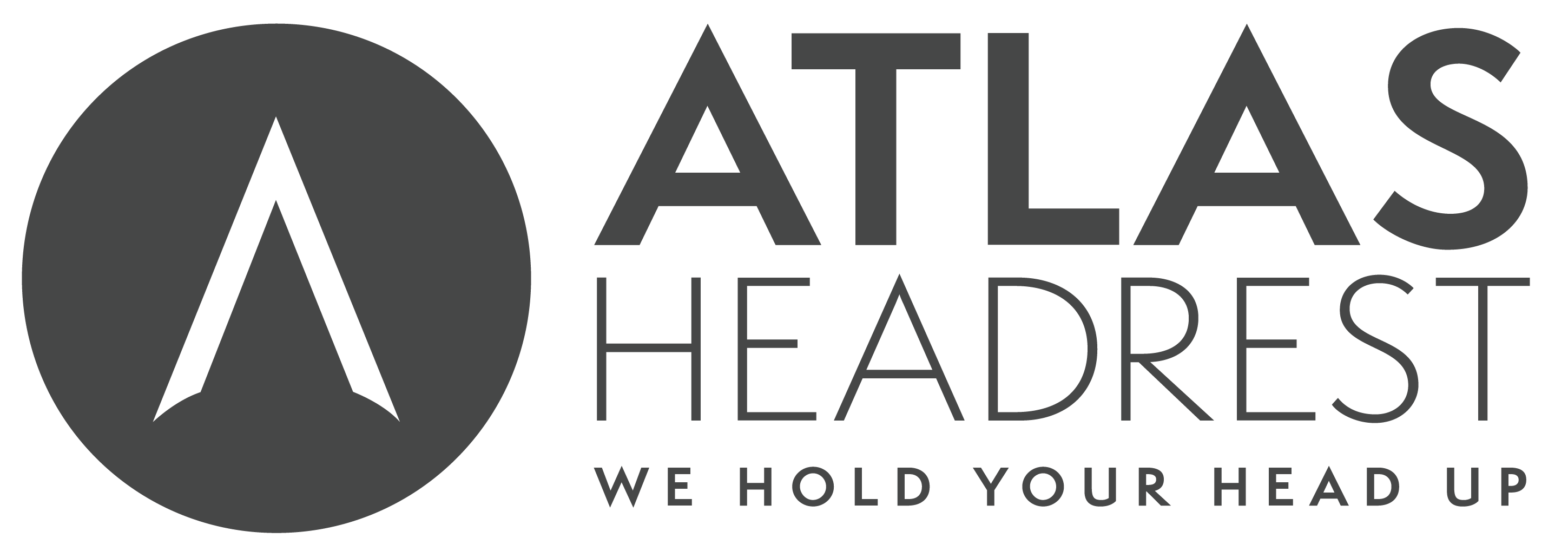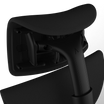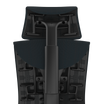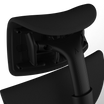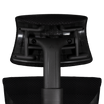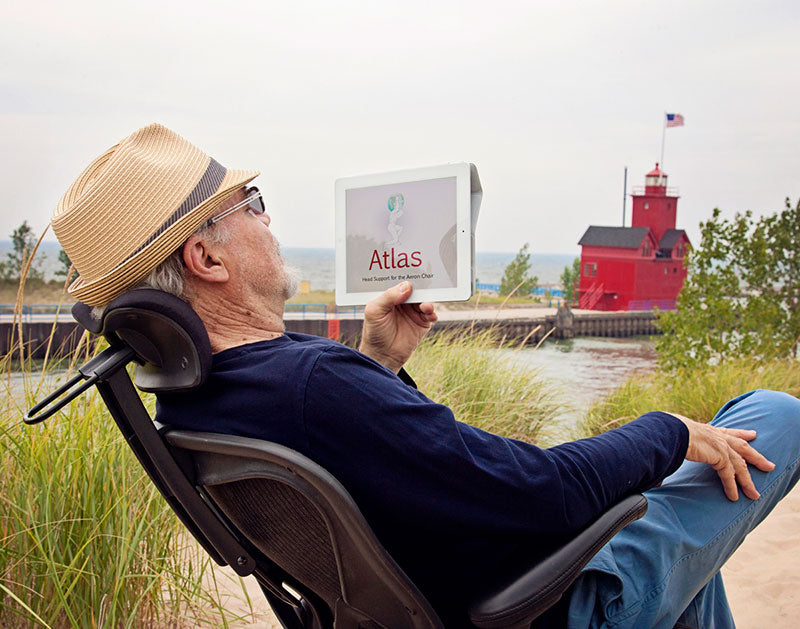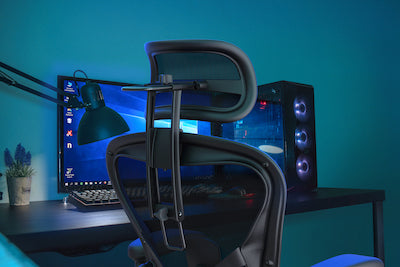Headrest Physiology
The cervical spine is the part of the spine that allows for the full range of movement of the head. The skull sits atop the first vertebra—Atlas. Atlas sits atop Axis, and so on through the rest of the neck. The Atlas and Axis vertebrae are designed to deliver a wide range of movement.
When your head is above a more or less vertical spine, the muscular effort is minimal, since your head is nicely balanced. However, when your torso leans away from vertical, the balance is disrupted, and muscles contribute more to the support effort. In addition, with more recline, the limits of movement of the cervical spine are reached, and the head moves even more away from the balance point.

These two physical situations that result from reclining—moving the cervical spine into extreme flexion, and muscular effort to hold that position—cause fatigue and discomfort, and can contribute to spinal damage and stenosis if the head and neck are not supported.
A properly designed and fitted headrest, such as Atlas, gives the support necessary to give the benefits of a reclined posture while preventing injury.

Vitruvian Man
Headrest Comfort
Bill Stumpf and Don Chadwick taught us that comfort was the result of having a wide range of postural choices. It feels good to be able to move around. It’s also healthy, because the different local parts of your body are relieved when the next part takes over. It’s kind of like a relay race.
Atlas has a wide range of effortless adjustment that gives you the position that feels good now, and feels good when you change it a little later. It doesn’t lock you into a fixed, uncomfortable, unhealthy posture.
